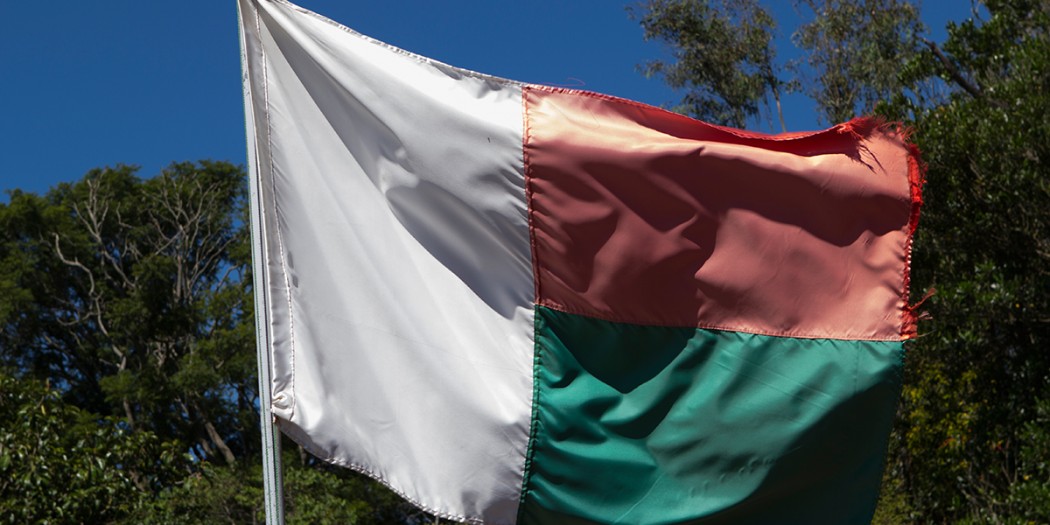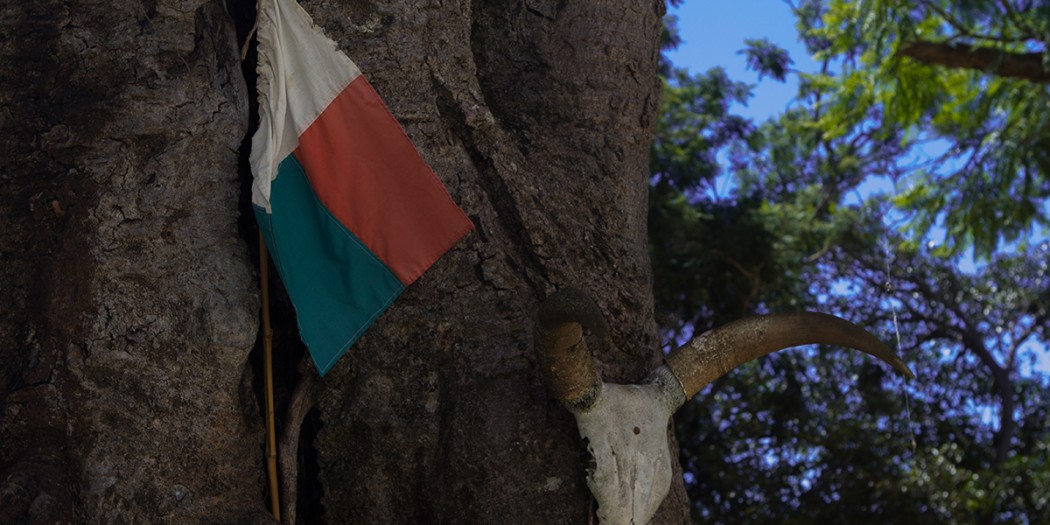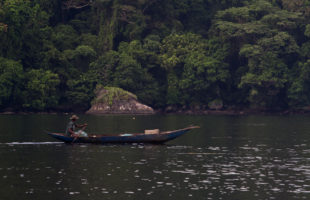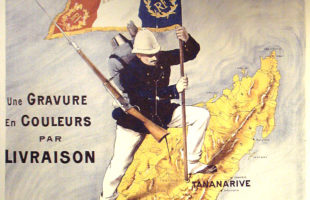Madagascar’s national flag carries the colours white, red and green (white vertically in the left two fifths, red and green horizontally in the right three fifths of the flag). It was introduced on 21.10.1958 with Madagascar’s independence as the official national flag. It was preceded by a competition to create a new national flag. In 2009, the various proposals of that time were shown in an exhibition in Ampefiloha.
There are different theories about the colours of the flag and their meaning:
The red symbolizes the sovereignty, strength and patriotism of the Madagascans. It is the typical house colour of the Merina, and thus the predominant ethnic group of the country. The kings of Merina preferred red robes, and the rebels against the French colonial power also called themselves menalamba, the red dressed. In addition, ancestral cult is still practiced in many areas of Madagascar, including the sacrifice of zebus and their blood. The colour red therefore plays an important symbolic role throughout Madagascar. It could also be the colour of the Sakalava, the largest ethnic group in the north.
The white colour stands for purity of heart, loyalty, peace and freedom. It is also the colour of rice, which is the main food of the Madagascans and thus the basis of life. White is also the colour of the traditional lambas (a particular garment) of the women of Merina. It can be assumed that the red-white elements of the flag were borrowed from the same-coloured flag of the Kingdom of Merina.
The green part of the current national flag indicates the high proportion of agriculture in Madagascar, the extraordinarily high biodiversity and is also a colour of hope. Green is also the colour of the travellers’ tree, which can be found in many Madagascar logos and stands for the connection between man and nature. A more ethnic view is that the green colour represents the coastal peoples (as opposed to the red merina of the central highlands).
 MADAMAGAZINE Your Magazine about Madagascar
MADAMAGAZINE Your Magazine about Madagascar







